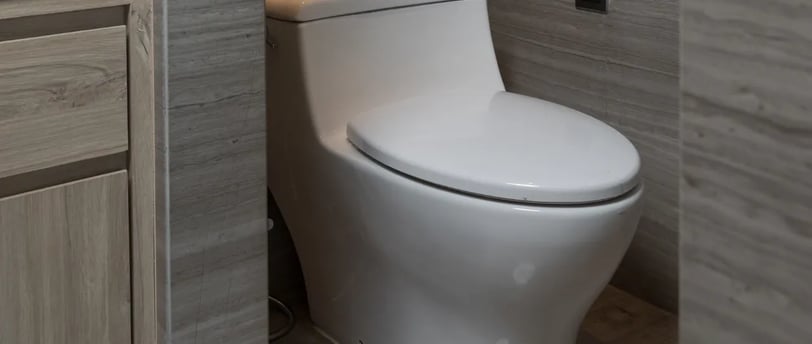How much water do you save by upgrading to newer toilets
4/17/20234 min read


Newer toilets use less water than older models, which can save you money on your utility bills and help conserve water resources. If you're thinking about upgrading your bathroom, there are a few things to consider before making a purchase.
First off: what exactly is considered "newer?" The EPA defines newer toilets as those manufactured after 1994 that use 1.6 gallons or less per flush (gpf). These systems have been shown to reduce the amount of water used by about 30%. In addition to saving money and reducing our impact on the environment, upgrading may also be required if you live in an area with strict conservation laws or drought conditions--a common example being California's ongoing drought emergency declarations from 2014 until now!
How Much Water Do Older Toilets Use?
Older toilets manufactured before 1992 use 3.5 gallons of water per flush.
Newer toilets, on the other hand, use 1.28 gallons per flush (or less).
Water Conservation Benefits of Newer Toilets
Gallons per flush. The EPA WaterSense label is a certification that indicates the amount of water a toilet uses, and it's usually displayed on the tank. Toilets that earned this use 1.28 gallons per flush (gpf) or less. If your old toilet doesn't have this label, consider upgrading to one that does--you'll save money on your water bill every month!
EPA WaterSense certification: If you're interested in upgrading your current model but aren't sure where to start, look for toilets with an EPA WaterSense certification sticker on them--they're designed to be more efficient than other models without sacrificing performance or comfortability.* Savings on water bills: Once installed, newer models can help save money by reducing how much you spend each month on utilities like electricity and gas due their lower energy usage compared against older versions which require more power from these sources in order to function properly
Types of Newer Toilets
Dual flush toilets
Pressure-assisted toilets
Gravity-fed toilets
Installation Considerations
Before you start shopping for a new toilet,'s important consider the plumbing requirements of your home. If you have an older home with two-inch drain lines and four-inch water supply lines, you'll likely need to upgrade both before installing a new toilet. This can be done by hiring a professional plumber or doing it yourself with parts from your local hardware store.
If cost is a concern and you're comfortable working with tools, consider buying an all-in-one kit that includes everything needed for installation--from wax ring seals on the bottom of the bowl through adapters that allow different types of toilets (e.g., round vs elongated) to fit into existing setups without any hassle whatsoever!
Maintenance Considerations
When it comes to maintenance, you want to be sure that your toilet is in good working order. This means checking the tank and bowl regularly for leaks, cleaning the flush mechanism regularly with vinegar or bleach (depending on the type of toilet), and ensuring that all parts are working properly.
If you have a newer model of toilet that uses less water than older models, it will likely have an automatic flushing feature built into its design. This can make it harder for you to check whether or not there are any problems with this mechanism because it will often work as expected when tested manually by pressing down on its handle repeatedly until all waste has been flushed away completely from inside your tank's bowl area--but this isn't always true!
Rebates and Incentives
In addition to the water savings, there are also rebates and incentives available.
State Some states offer rebates for upgrading your toilet. Check with your utility company to see if they offer any incentives as well.
Utility company incentives: Many utility companies have programs in place that give customers money back for installing more efficient appliances such as toilets or washing machines (and even dishwashers). The amount of money varies by city and state but can be up to $100 per appliance!
Tax credits: If you're planning on remodeling your bathroom anyway, consider doing it now so that when tax season rolls around again next year you'll get some extra cash back from Uncle Sam!
Conclusion
Overall water savings: The EPA estimates that upgrading a 3.5 GPF toilet to a 1.28 GPF model can save up to $60 per year in water costs.
Long-term savings: If you're planning on staying, it's worth considering how much money you'll save over time by upgrading your toilets instead of buying new ones when they break down.
Additional benefits: You'll also be helping the environment by reducing your household's overall carbon footprint and contributing less waste into landfills--plus, if you have young children at home who are still learning how to use the bathroom properly (or any age group with limited mobility), having low-flow toilets will make things easier on them!
FAQs
How long do newer toilets last?
What kind of maintenance is required for newer toilets?
Can I install a newer toilet myself, or do I need to call a plumber for installation and repairs?
Resources
EPA WaterSense website: https://www.epa.gov/watersense/
Local plumbing contractors: You can find a list of local plumbers on the Internet or in your phone book.
Local rebate programs: Some cities and counties offer rebates for replacing old toilets with newer ones that use less water, so check with your local government to see if they have any programs in place!
